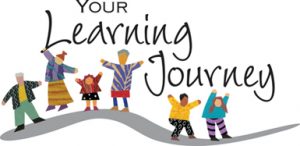by C. Elkins, OK Math and Reading Lady
So you have established a respectful classroom community, practiced procedures and expectations for independent work stations, assessed your students, and decided on how to group them. Now you are ready to implement your literacy learning stations – but how? In this Part 4, I will focus on the rotation system. In Part 5, I will focus on a more flexible system.
A successful rotation system means your students are divided into groups, and each group rotates to a different learning station at a set time (usually 15-20 minutes, longer for intermediate). The teacher table is one of the learning stations. Others can be computers, listening, silent or partner reading, letter or word work, writing, comprehension, etc. See my Literacy Station Ideas pdf. In this article, I will focus on organization, management, behavior concerns, and pros / cons of the rotation system.
Organization:
- Have a defined location for your teacher instructional station (such as a horseshoe table). Have your teaching materials within reach (the books, pencils, small whiteboards, markers, letter tiles). Your table needs child-size seating. Since chairs are often at a premium, try the home-crafted crates with padded colorful tops. The location should be where the teacher can see everything else in the room.

- Some of your stations will be at fixed locations in the room (such as computer, smartboard, or library stations). If you have a large classroom, you may be able to have a dedicated location for the other stations as well – usually around the perimeter of the room. If you have a small sized room, then you may want to invest in some sturdy storage tubs or containers which can be stacked. These can be stored on shelves and then brought out to desk tops or floor areas at station time.
- Provide signs for your stations. This makes them inviting for the students and lets them know where they are / where to go. If you are using tubs, label them also. Remember the anchor charts I mentioned in Part 3? Make sure these are prominent, even if you have to shrink them or put them on little easels.
- Make some type of chart so students know who is in which group. You lose a lot of transition time calling each child’s name. Identify them as group 1, 2, 3 or blue group, red group . . . or something else. Remember groups should be flexible and readjusted when needed, so something that is easy to change is best.
- Provide some type of graphic so students know where to start and which station to visit next. If at all possible, arrange it so students don’t have to criss-cross the room to get to their next station. Going in a circular motion might work well. A diagram, a pocket chart, or a clothespin poster are good ways to show this. Do some dry-runs to practice lining up and moving from station to station in orderly fashion. Model what you expect.
- Have a timer handy (or set your smart phone) to keep your system on time. I found it helpful to give a 1-minute warning before changing time. And allow time for cleanup.
Management
- The purpose of your work stations should be to provide differentiated tasks to accomplish learning objectives – not just to keep them busy while you teach your small groups. This means careful consideration of what you put at each station. This is one reason I prefer the name “Learning Station” or “Work Station.” I think it implies we are here to learn. You may like to color code your activities so they match the group. Example: At the word work station, the Red Group students choose from the activities with the red dot.

- Keep children accountable for their learning. This may mean taking a moment before children clean up to observe what they did (ex: word sorting results, words they made with magnetic letters), or providing some way to produce a written record (students write the words they made, keep a list of the books read), and a pocket folder to keep their written work in. If they are self-checking activities, stress the need to do the activity before checking – you don’t help yourself learn by cheating.
- The best station activities are ones you have previously introduced and practiced. Don’t give a 1 minute oral explanation of the activity and expect students to be successful. Also, activities should generally be for review. If they are trying to practice new material on an independent unsupervised basis, they are more likely to do them incorrectly. . . which isn’t helpful.
- If you have an adult volunteer, assistant, or paraprofessional in the room, then they can perhaps monitor station activity and assist students, listen to students read, check sight words, etc.
Behavior Concerns
- Establish procedures regarding acceptable noise levels. Encourage whispering between group members, which I always define as “the person you are talking to can hear you, but not everyone else.”
- Have a contingency plan for when centers involving technology aren’t working. Or maybe you have a student you trust who knows how to “fix” certain problems – let them take care of it instead of you.
- Teach “I need to go to the bathroom” sign language symbols to your students so they don’t have to interrupt you. You can acknowledge them from a distance. Learn how to “say” these words in sign language (sit, stop, yes, no, restroom/bathroom, water) so you can deliver a message across the room. (Click on words to see graphic.)
- Many teachers have positive results with wearing a hat, a crown, or having a little table light to signify, “I am teaching, don’t interrupt me” when I am wearing this.

- Positive reinforcement works well. If you think the noise level is too high, or you are being interrupted too much, try this: Without telling your students, keep track of the number of times you have to stop to quiet students down, the number of interruptions, or the number of minutes lost to these. At the end of your rotations for that day, have a meeting with the students. Tell them something like, “Boys and Girls, I have been concerned about the number of times I have had to stop to get you to work quietly. When you don’t work quietly it keeps you, your classmates, and my group from learning. Today I stopped 6 times. This is too much. Tomorrow when we are in learning stations, I am going to keep track again. If the number of times I have to stop is less than 6, then the class gets a reward. I don’t have time to decide which individuals are quiet or noisy, the whole class needs to work together to reduce the noise. For our reward we are going to build the word GAME. Each day we have less interruptions, I will add a letter to spell GAME. When we spell all of it, then the whole class will get to play a special game.” Then of course students need to hear what an acceptable level and un-acceptable level of noise sounds like. (This reward can be changed, of course, to something else – but it should be one that can be achieved in a short amount of time so children will get the reward soon. If they have to wait too long, they will quit working for it.) When that goal is achieved, you select another to work on.
Pros of Rotation System
- Students visit predetermined stations every day. A set routine is established.
- The rotation schedule is posted so everyone knows where they should be.
- Time is controlled (15-20 minutes per rotation).
- Less number of stations needed, means less preparation time (4 groups = 4 stations).
Cons of Rotation System
- Each group stays together for each rotation. If everyone gets along, this is ok.
- What happens if students finish before rotation time is up, or if they don’t finish when rotation time is up?
- This system is more difficult with larger classes (24 or more). Either you have to plan for more groups (ex: 6 groups for 24 students), or your groups are larger (6 students per group for 4 rotations).
- The larger the group, the noise level (and conflicts) usually increases.
- Instructional time is lost due to transition time from group to group.
- Students do not choose where to go, teacher chooses.
Always eager to hear about your experiences or advice concerning guided reading. Feel free to pitch in and comment. Next week the topic will be a flexible learning station system.